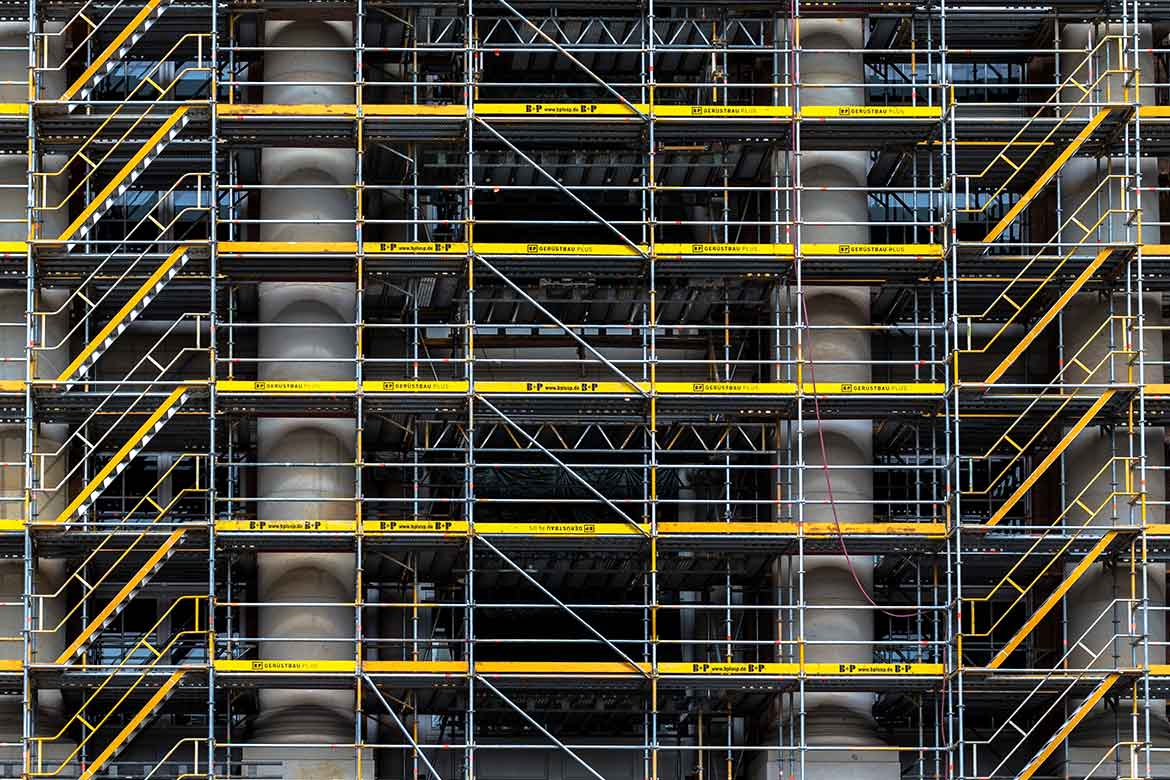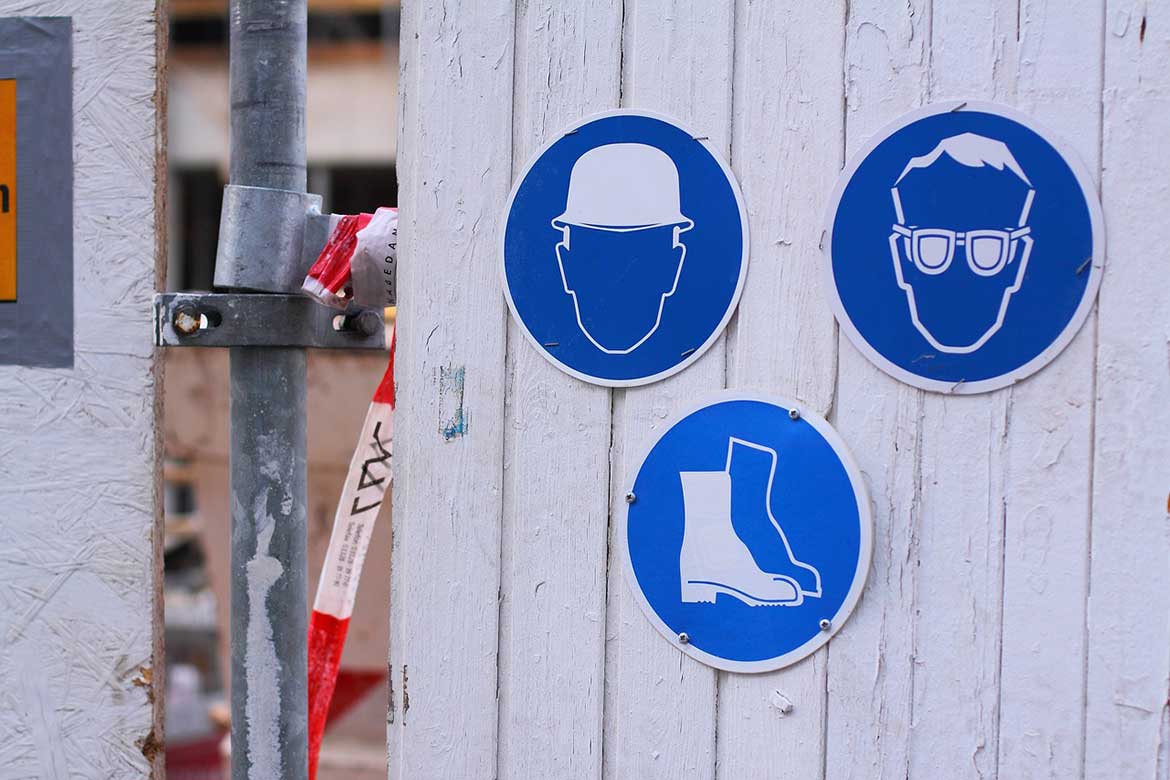6th May, 2021
Top 5 Construction Safety Hazards (And How You Can Control The Risks)
If you work in construction, these are the safety hazards most likely to harm you. Updated with the latest accident statistics from the HSE, we look at which safety hazards are most likely to kill or injure you in construction and how you can control the risks on site.

Perhaps this blog post should be called worst 5 construction safety hazards. After all, I don’t have a top construction safety hazard any more than I would have a favourite illness, but none-the-less, here are our top 5 construction safety hazards.
By top 5 we mean, if you work in construction, these are the safety hazards most likely to harm you*.
1. Work at Height
Construction work is dangerous and 40 construction workers were killed in 2019/20 according to HSE statistics. 21 of these deaths were from falls at height. That's over 50% of construction deaths. Falls from height also accounted for 18% of non-fatal injuries in construction, compared to 8% across all industries.
So what’s behind this statistic?
Well, the high number of falls within the construction industry is largely because your exposure is increased. Work at height in some form can be found on nearly every construction site. So, if you work in construction, you are more likely to work at height. And when falls from height do occur, the resulting injuries are typically serious, and often fatal.
Major work at height, on roofs and buildings under construction, can be extremely hazardous if not carefully planned. Roofs and floors under construction, fragile roof materials such as roof lights or damaged roof sheets, add the risk of falls through the roof structure, along with the obvious risk of falls from the roof edge.
Read more about controlling the risks of falls in our recent blog post getting safety right when working at height.
Think carefully about your access equipment. Scaffolds need to be correctly installed by a trained and skilled team and formally inspected every 7 days. A step ladder is fine for changing a light bulb, but not for plastering a ceiling.

Don’t forget, with any outside work, the weather can play a huge part in increasing the risk, and work at height should not be carried out in windy, icy or very wet conditions.
You don't have to be high up for a fall to be serious. Even falls from low heights can be fatal.
Need Help? Download the work at height risk assessment template.
2. Falling / Moving Objects
Construction sites are busy places and often involve a variety of trades working closely together to both demolish and build. Considering this fact, it is no surprise that falling and moving objects are a major hazard, as different people and teams work throughout the site to get the project completed. Construction sites get busy, not many workplaces have to be as alert when it comes to watching out for moving materials, equipment and vehicles.
Contact with falling, moving objects, machinery and vehicles accounted for 22% of fatal injuries in the construction industry 2017/18-2019/20 HSE accident statistics. This type of injury also caused 17% (10,863) non-fatal injuries in construction in 2019/20.
Carefully planning lifting operations, exclusion zones below overhead work, ensuring communication between the various trades on site and always wearing appropriate PPE on site will help to protect you from falling and moving objects.
There is some good news. You are less likely to be killed being struck by a moving vehicle in construction, than in other industries as this hazard accounts for 18% of fatal injuries across all industries, compared to constructions reported 8% for 19/20. Good traffic management on site is crucial to keep this figure low.
Need Help? use the construction traffic management plan template.
3. Electricity
Electricity can kill, accounting for up to 4 deaths each year in the construction industry, and dozens of serious injuries (27 in 19/20). It's not just electricians at risk, accidental contact with hidden services is a hazard for all trades on site.
Before starting work, identify the location of electrical services, and make sure electrical work is only undertaken by a qualified and competent electrician.

When you are working near electrical wiring or equipment, the electrical supply should be turned off. Again, a competent person will need to carry out any work to electrical systems to ensure that the circuit is no longer live and it is safe for work to proceed. Always assume electricity is live unless it is proved otherwise.
Electrical tools used on site should only be 110v to reduce the risk, with regular inspections and any faulty equipment or leads taken out of use for replacement or repair.
And don’t forget about underground and overhead services. Before excavating make sure any electrical or other services are identified and marked on site, isolated or disconnected as required if there is a risk of contact. Overhead power cables should also be identified and precautions such as barriers, height restrictions of plant, isolation or re-routing taken as required.
Need Help? Download the pre-completed electrical risk assessment template.
4. Collapse
More of a risk than a hazard, a collapse was the cause of 9 construction deaths (22%) in 2019/20, which is significantly higher than figures across all industries (14%).
The risk of a collapse is at its greatest during demolition works or when a building or structure is partially completed, such as incomplete access equipment i.e. scaffolding. Structures can become unstable during modification, alteration and demolition.
Any building demolition work, no matter how small, should be carefully planned by a competent person, in a logical sequence, with any necessary temporary supports put in place to ensure that an unplanned collapse of the structure does not happen.
It's not just permanent structures that can collapse. Scaffold collapses are rare, but when they do happen they are almost always fatal. Make sure that scaffolding is erected by a competent team, inspected every 7 days or after any event that may affect its stability, such as extreme weather.
Need Help? Download the pre-completed demolition method statement template.
5. Handling Loads
Regardless of what part of the construction process you are involved with, if you are building something or knocking it down, you need to move materials and equipment to get the job done.
While moving loads is unlikely to kill you, it does feature in the top 5 causes of specified (6%) and over 7 day (26%) injuries in 2019/20. Being injured while handling, lifting or carrying is often the largest cause of over 7-day injuries in construction, and this remains the case in the 19/20 accident statistics.
So, what can you do to reduce the risk?
First, eliminate manual handling where possible and use mechanical means instead, particularly when moving heavy and bulky loads. Reduce the strain by using team lifts when mechanical means are not practical. And finally, know your limits and practice safe lifting. If something is beyond your capabilities to lift safely, get help with it. After all, pride comes before a fall... or should that be an injury in this instance?!
Need help to handle? Download the ready to use manual handling risk assessment template.
This blog post was first written in 2013 and has since been updated with the latest accident statistics*.
*Construction statistics published by the Health and Safety Executive and licensed under the Open Government Licence v1.0
This article was written by Emma at HASpod. Emma has over 10 years experience in health and safety and BSc (Hons) Construction Management. She is NEBOSH qualified and Tech IOSH.
Need health and safety documents?
Search hundreds of health and safety documents ready to edit and download for your construction projects.
Find DocumentsRecent posts like this...

Understanding Construction Site Safety Signs
Construction site safety signs are displayed to deliver a clear health and safety message. Failing to understand the meaning of a health and safety sign on site might mean you lose your life - or your job. In this post, we look at the different types of construction safety signs.
Read Post
The Working At Height Hierarchy Of Control Explained (With Examples)
In this working at height guide, we look at the three levels of the working at height hierarchy of control, and examples of the control measures you can consider at each stage before moving to the next level.
Read Post
11 Free Ways To Improve Construction Site Safety
Don't have the budget or resources to improve health and safety on your construction site? Don't panic! Many health and safety measures are free (or low cost), and easy to put in place. In this post, we will give you 11 free ways you can create a safer site.
Read Post